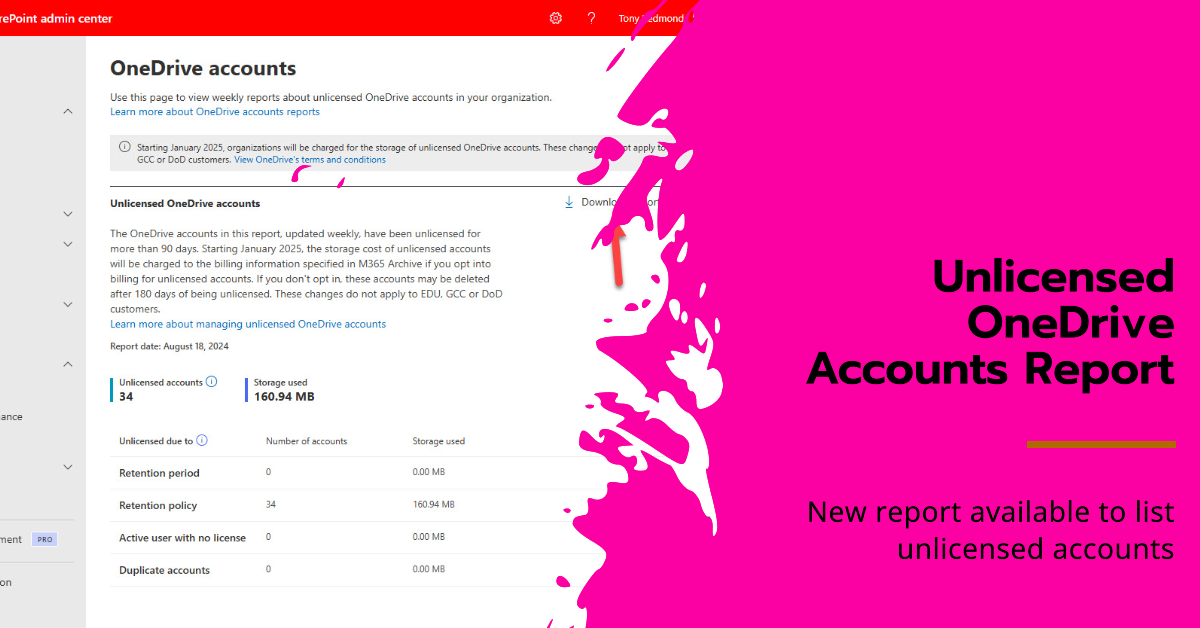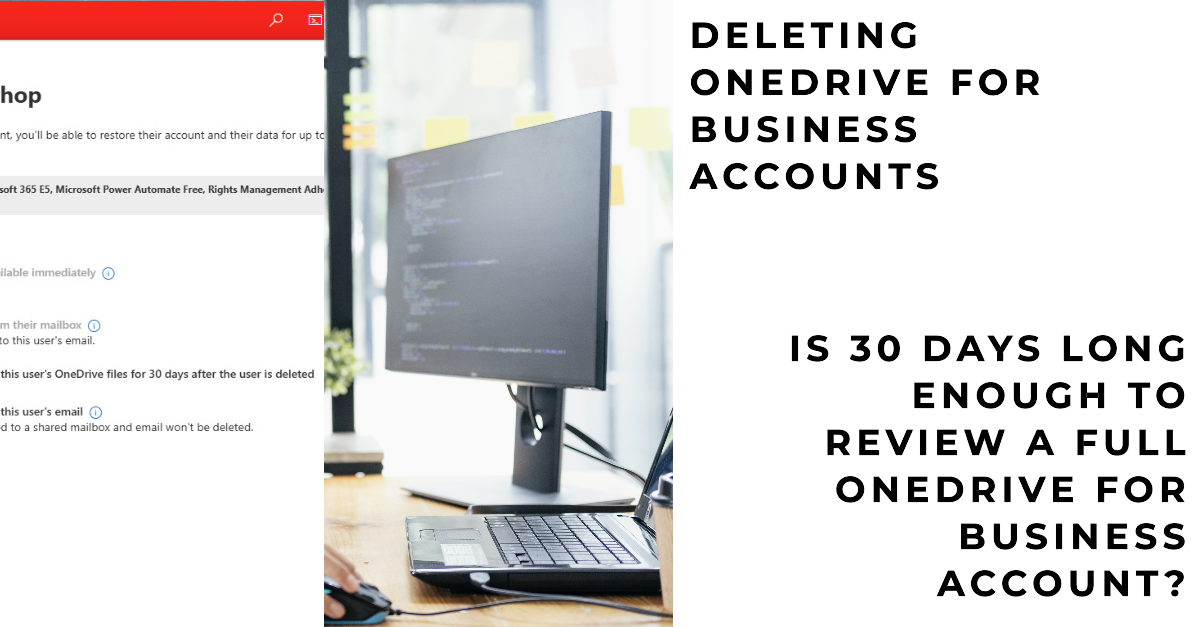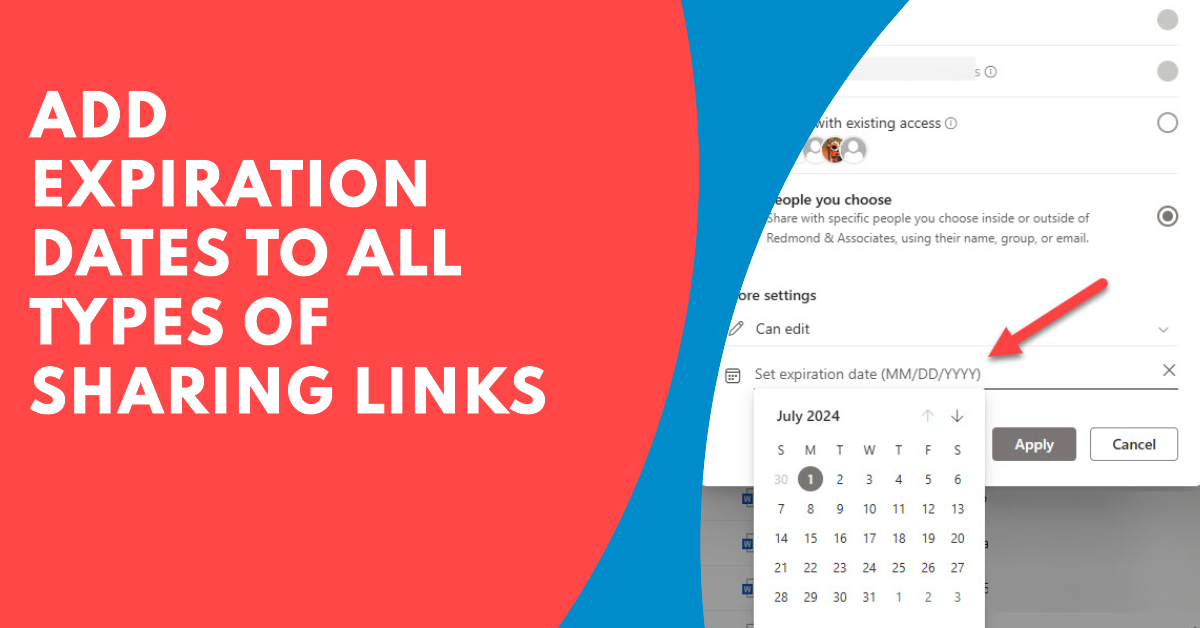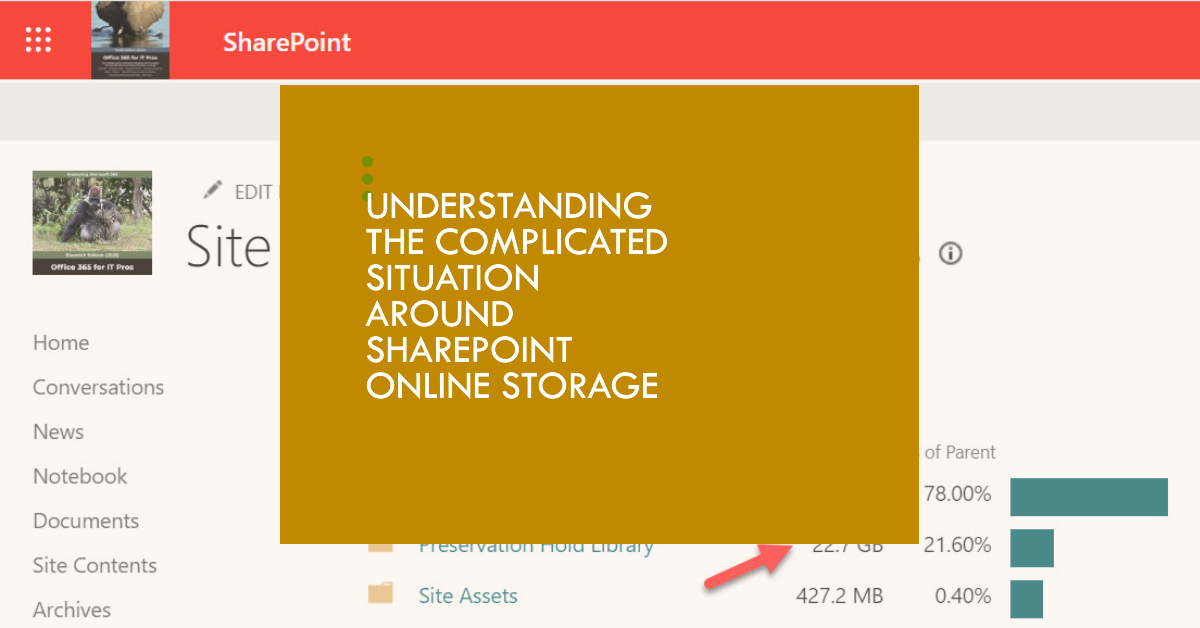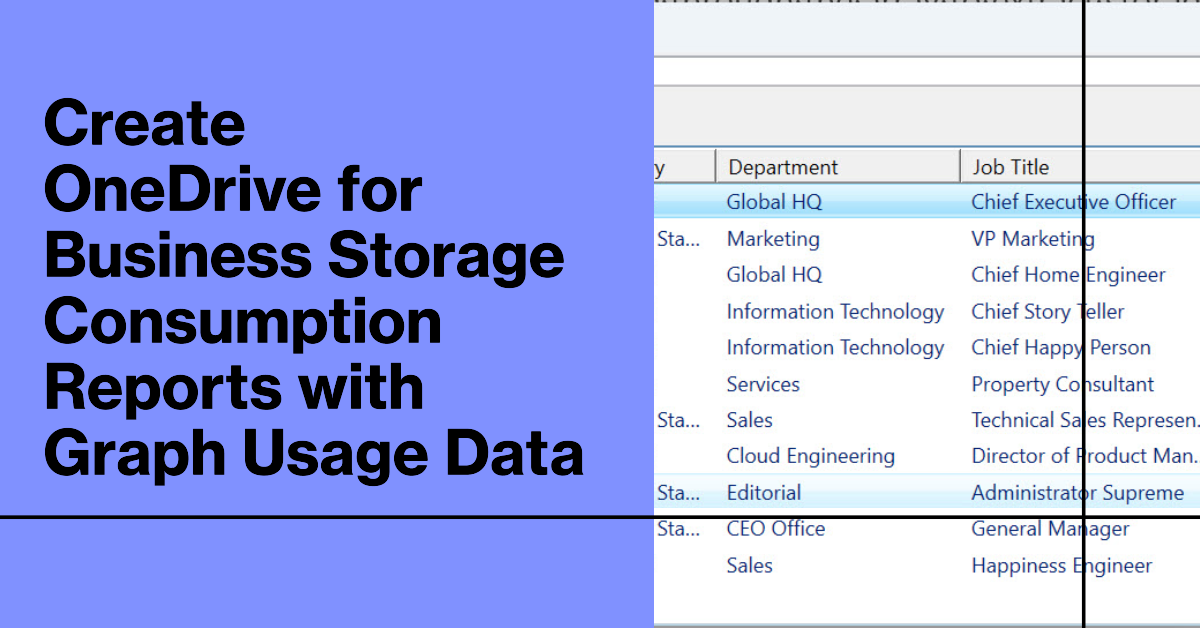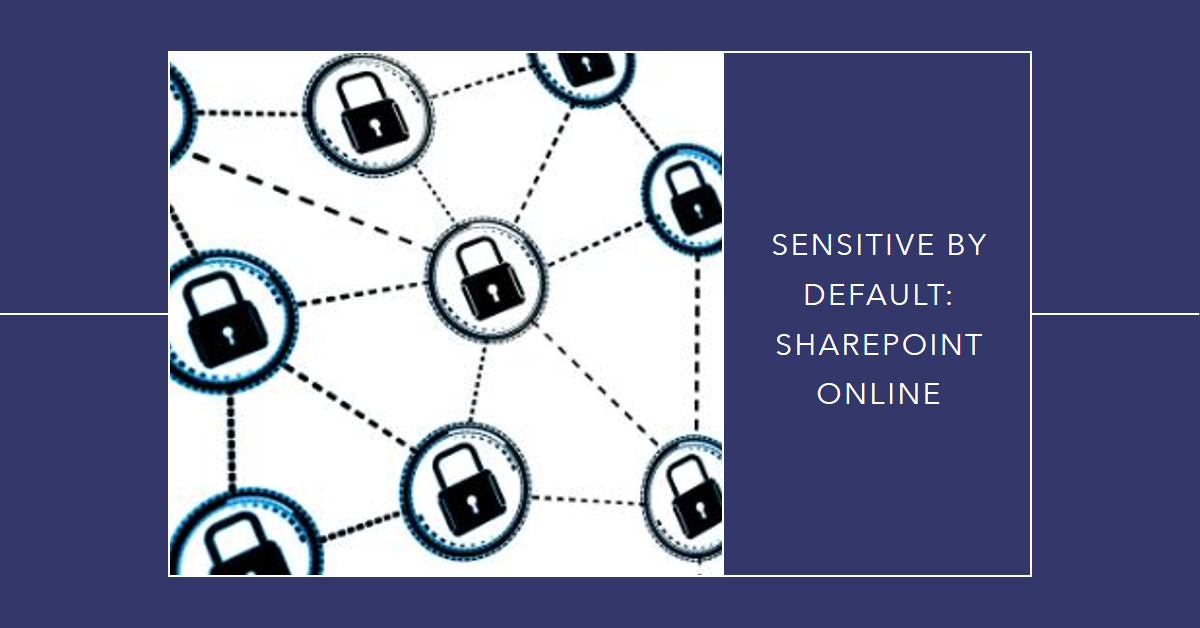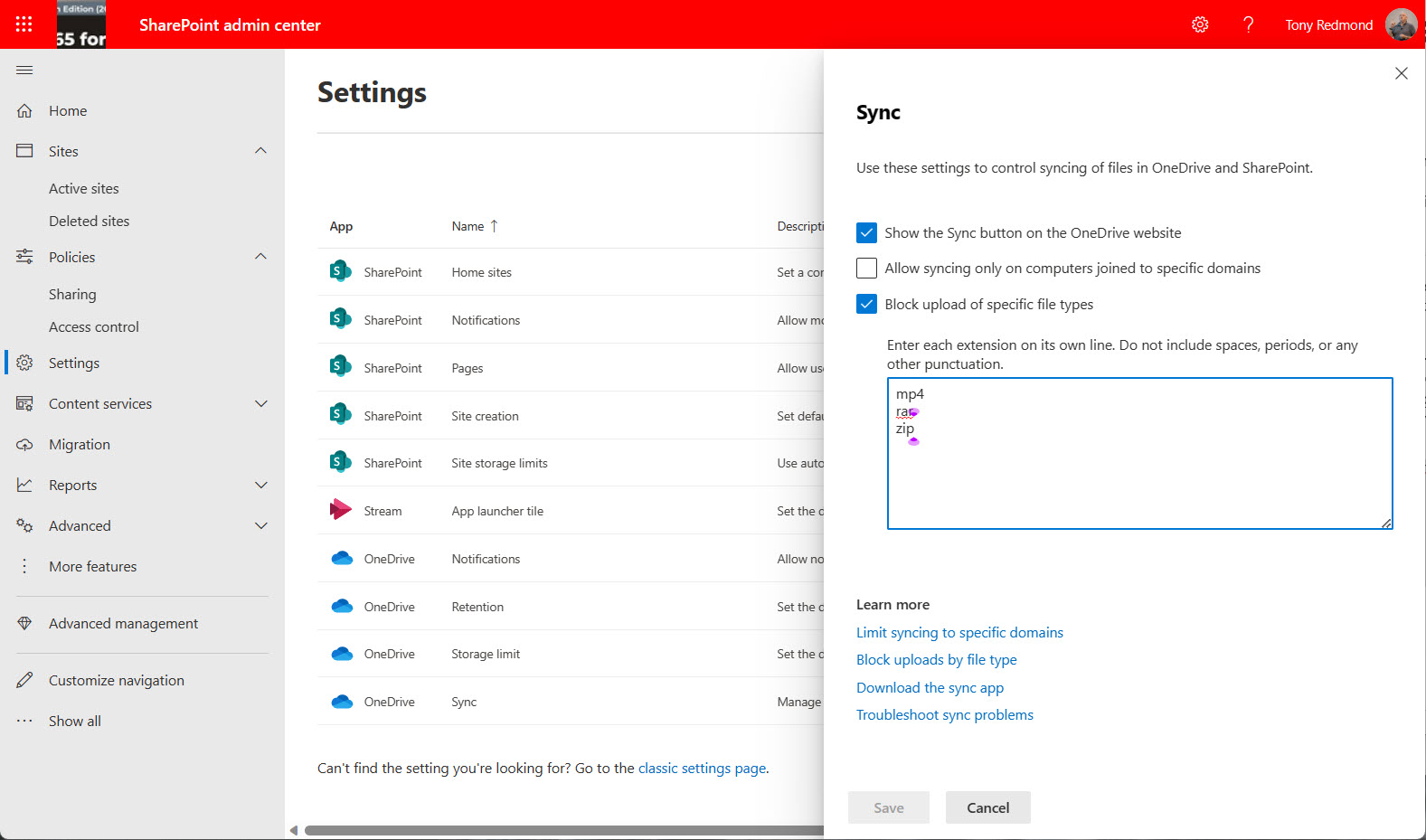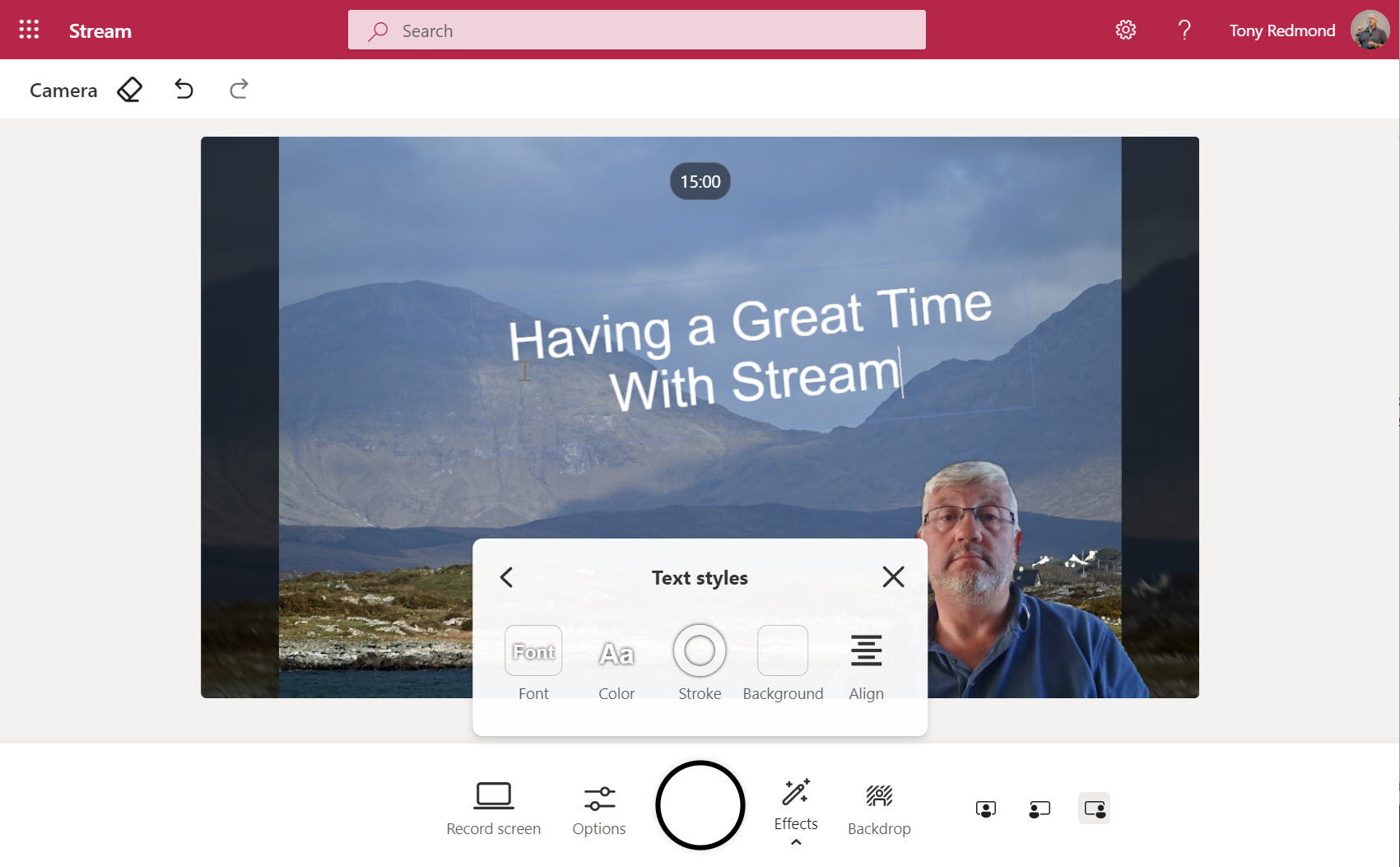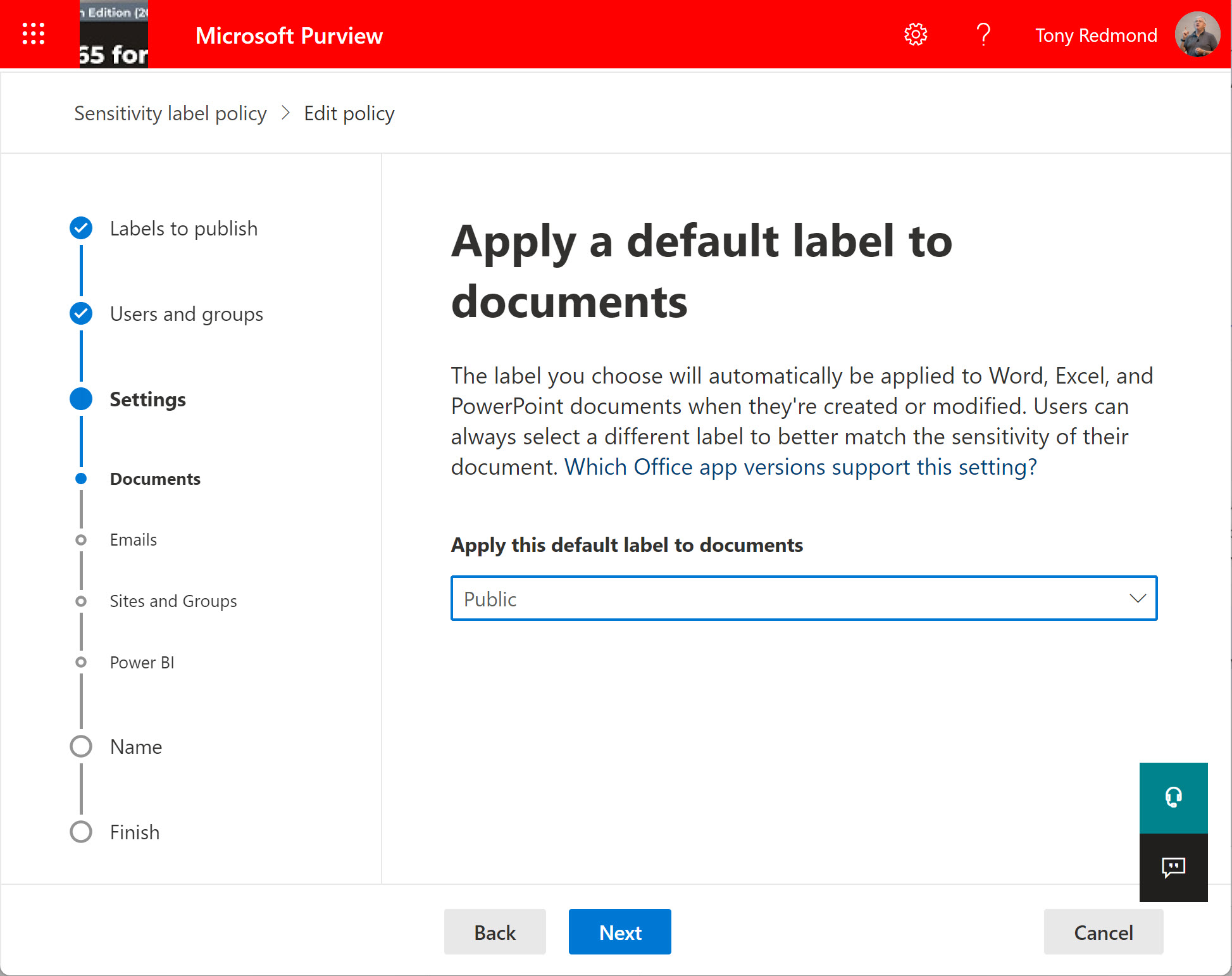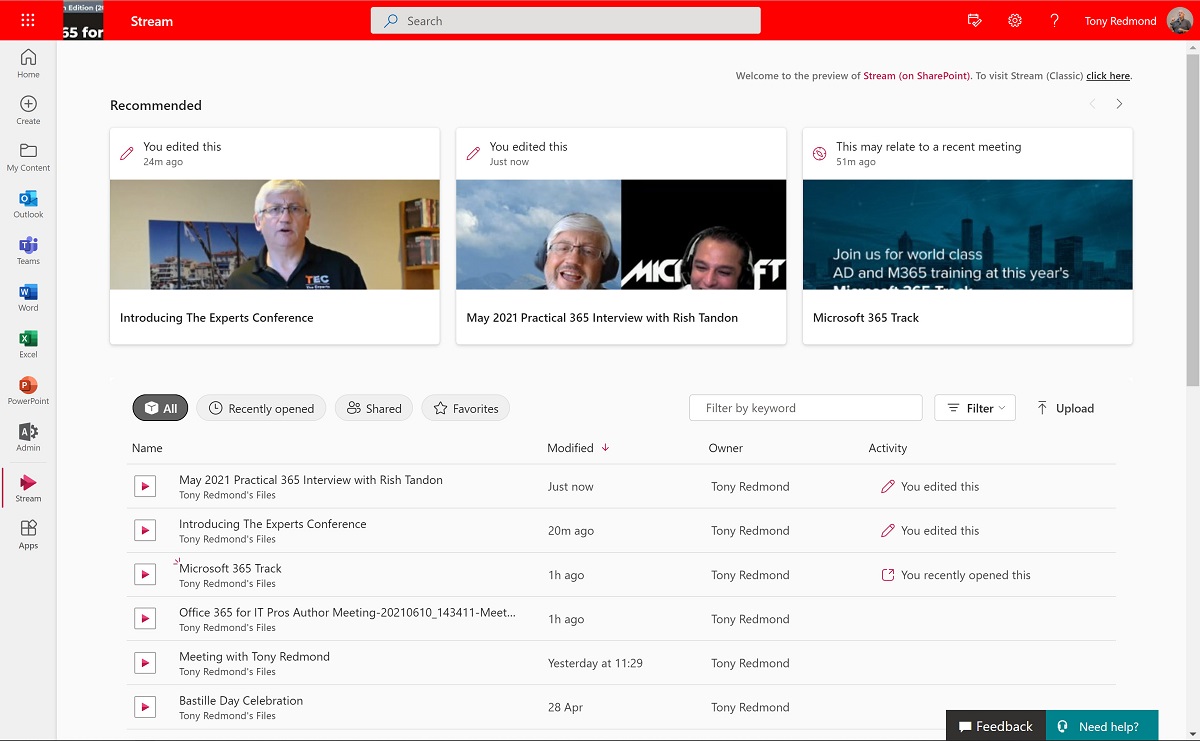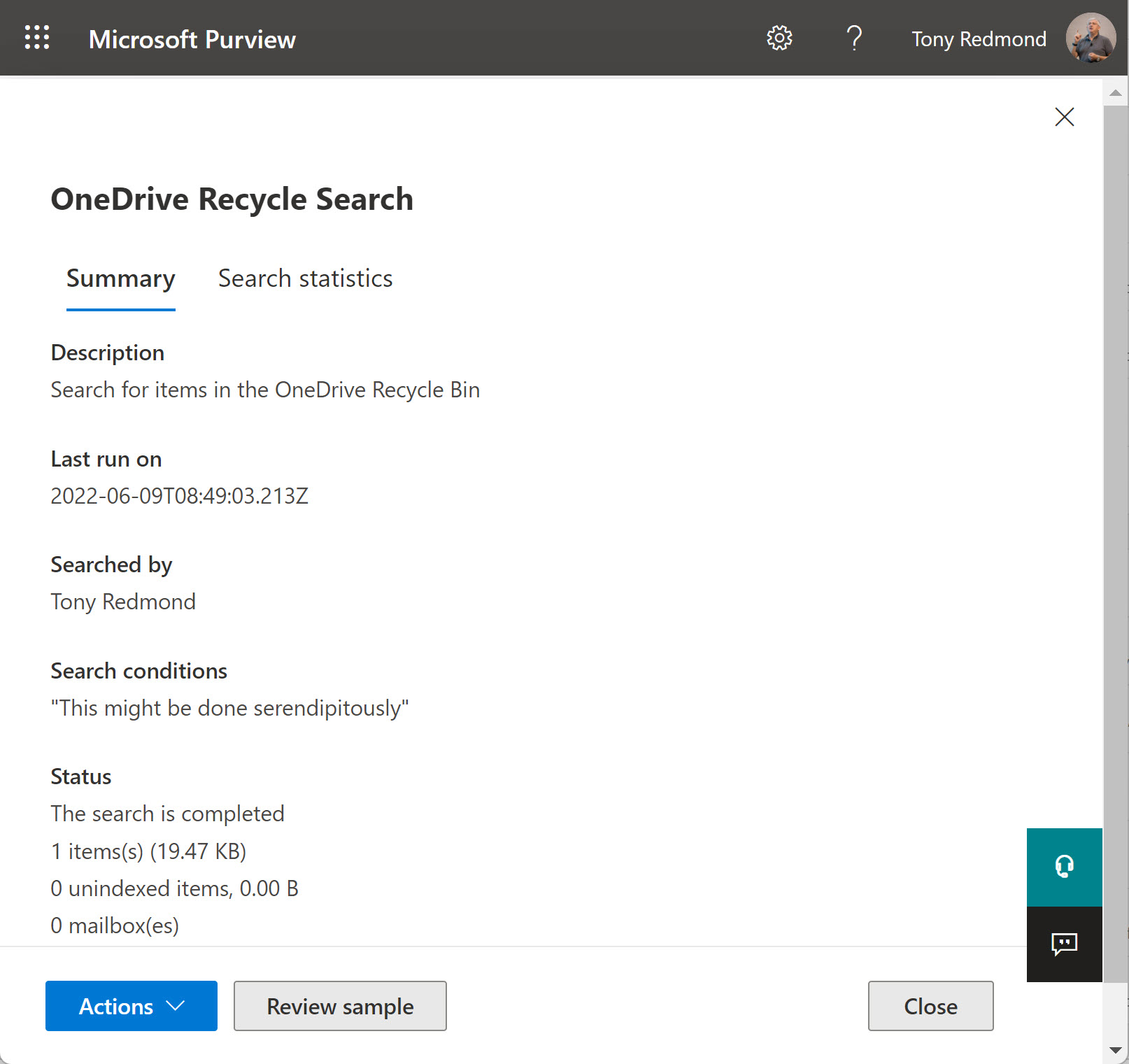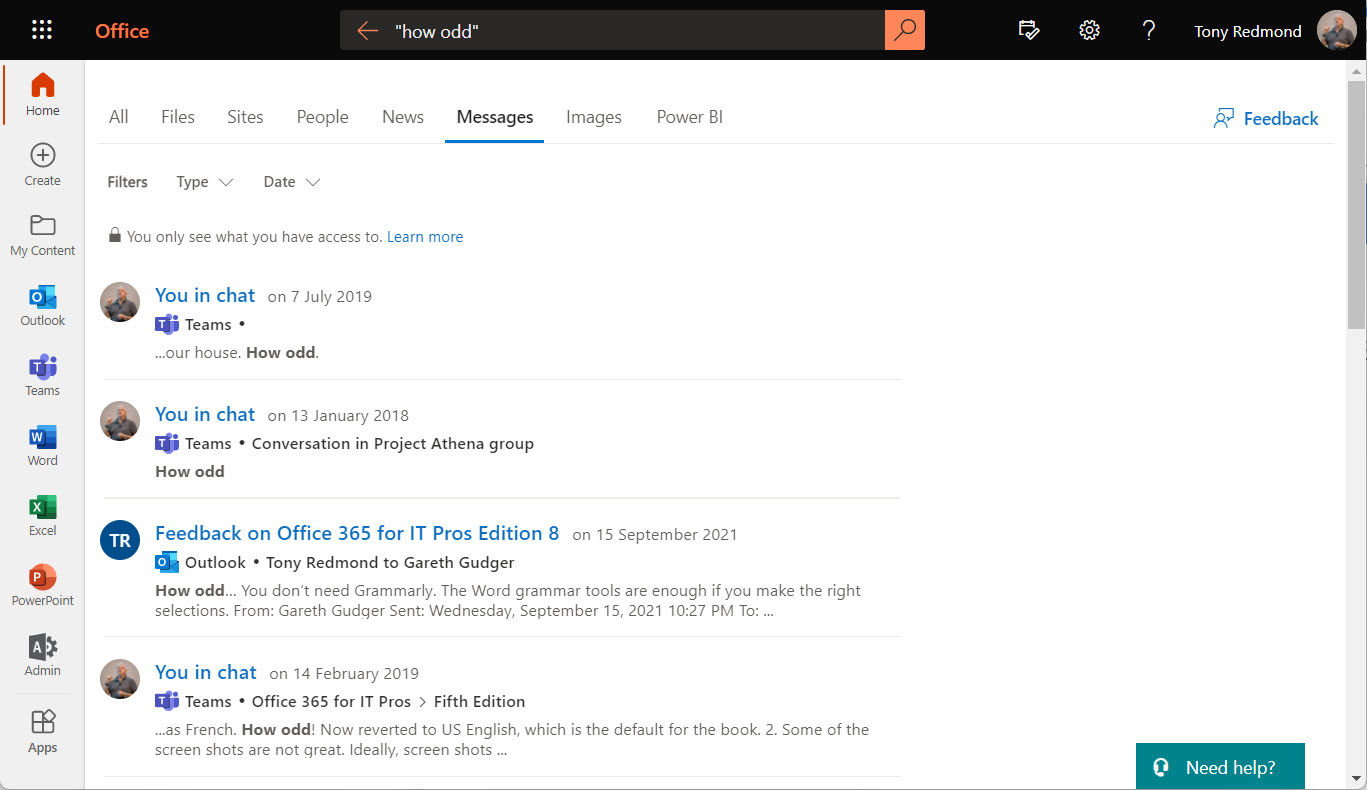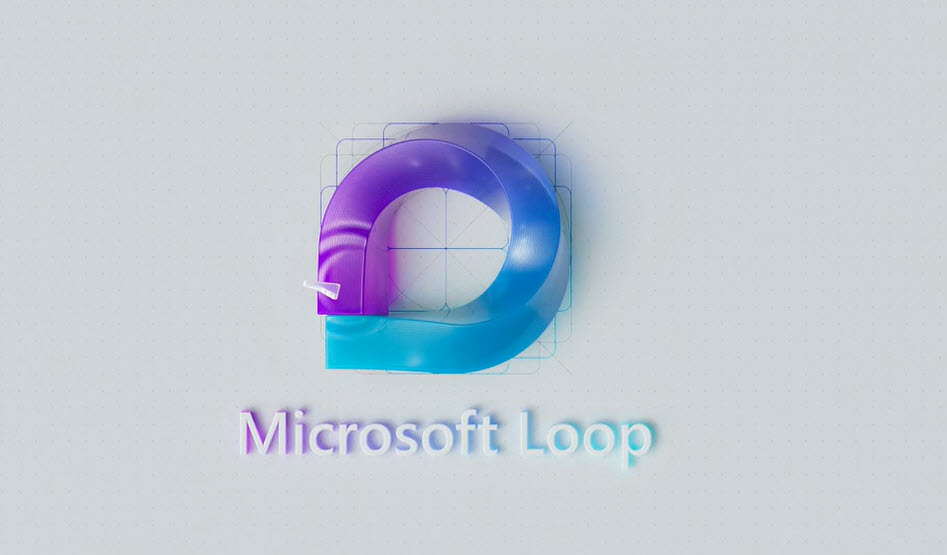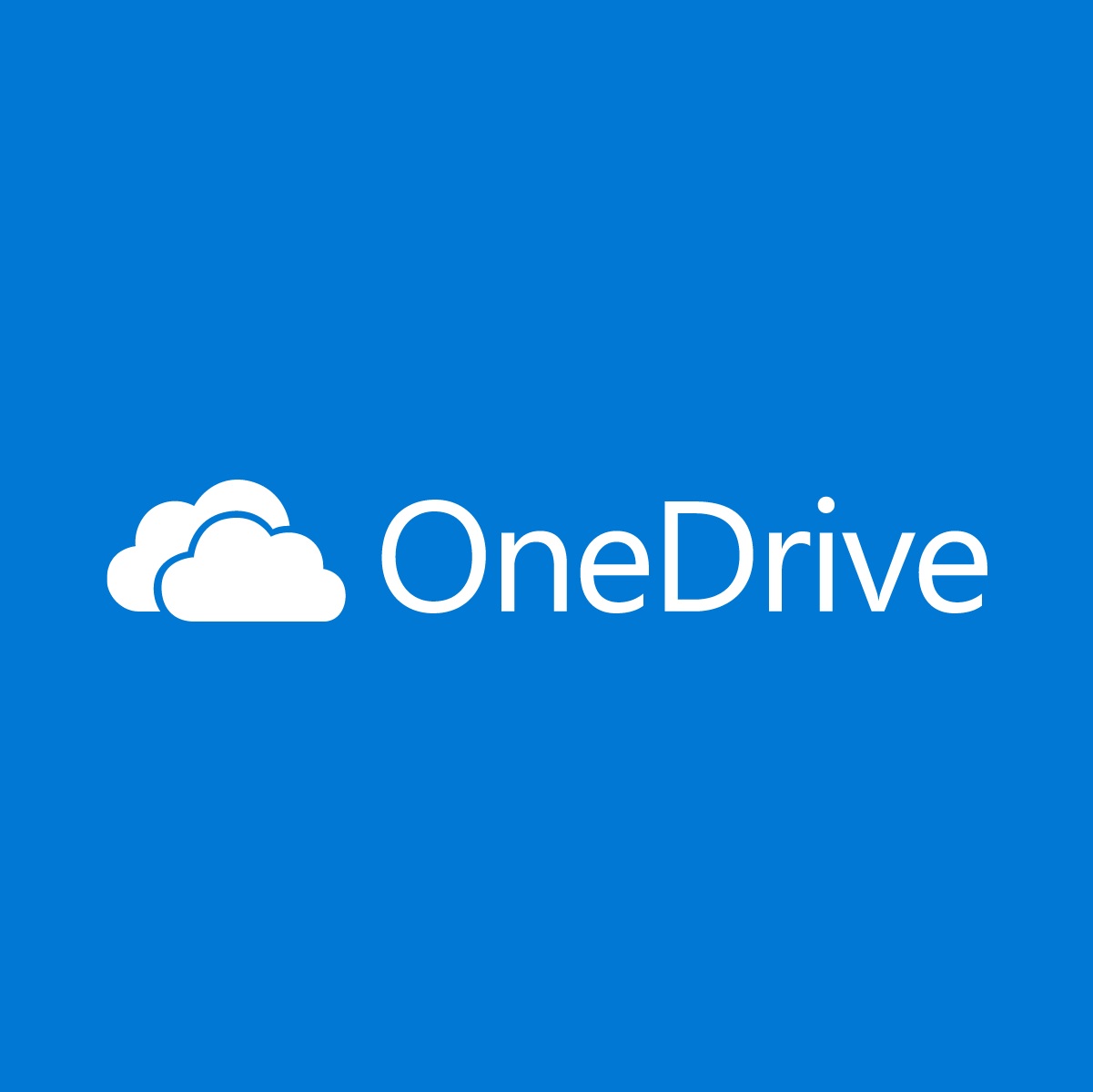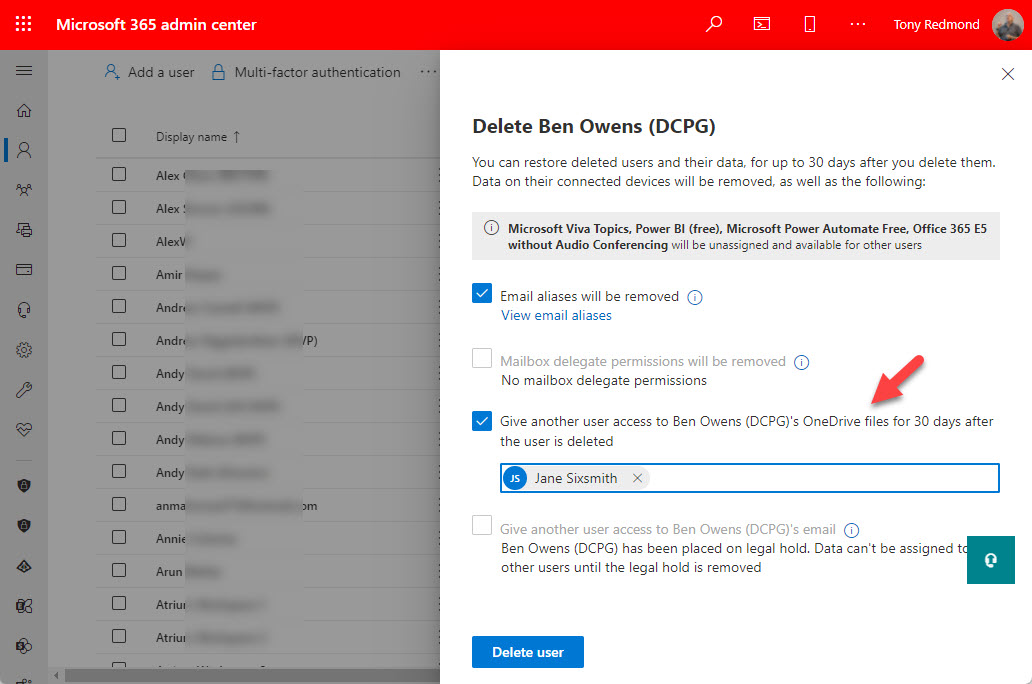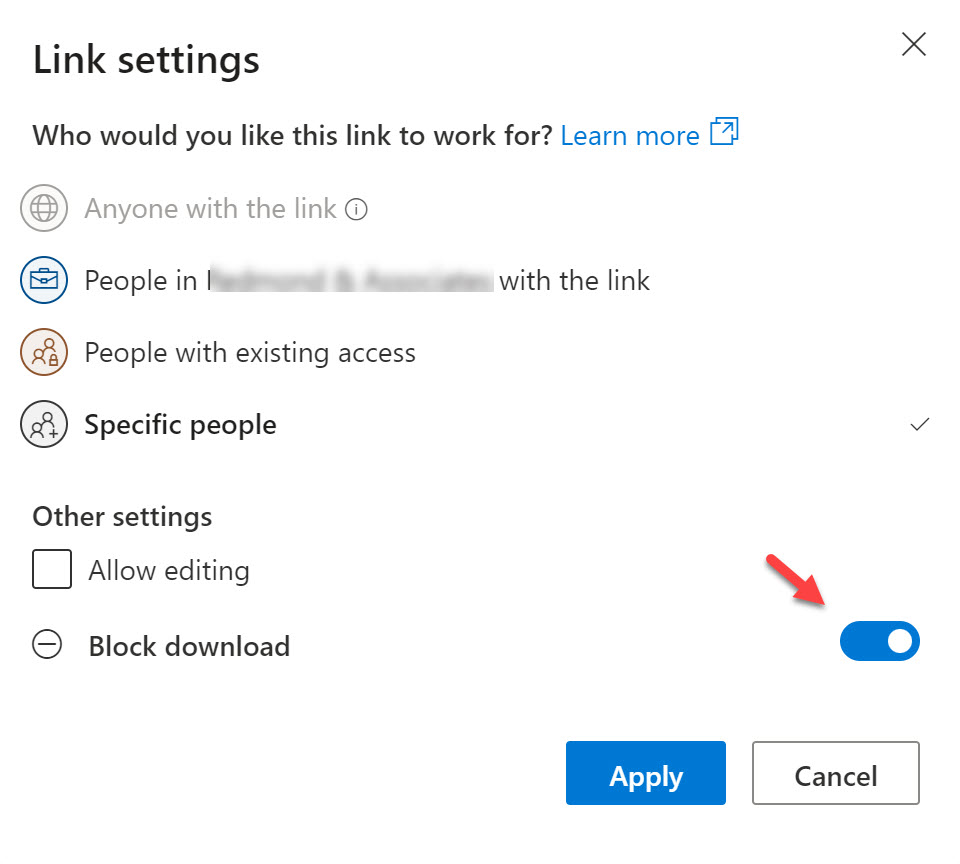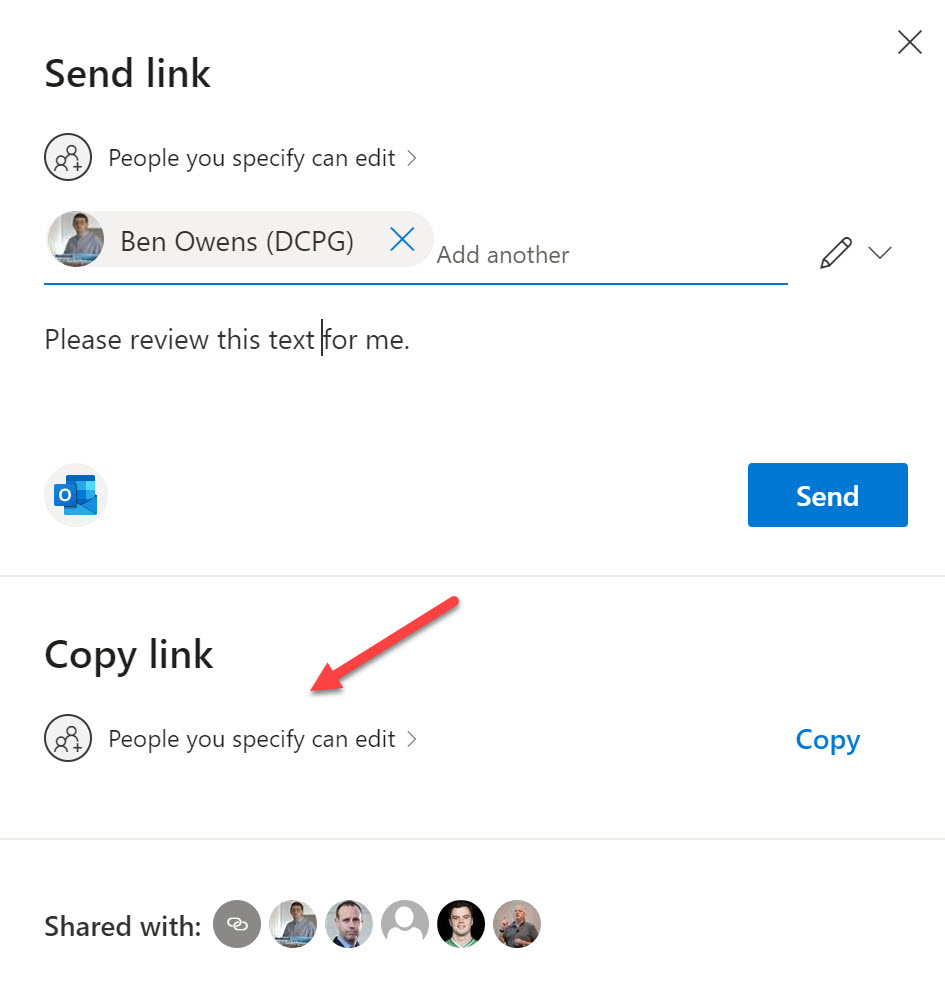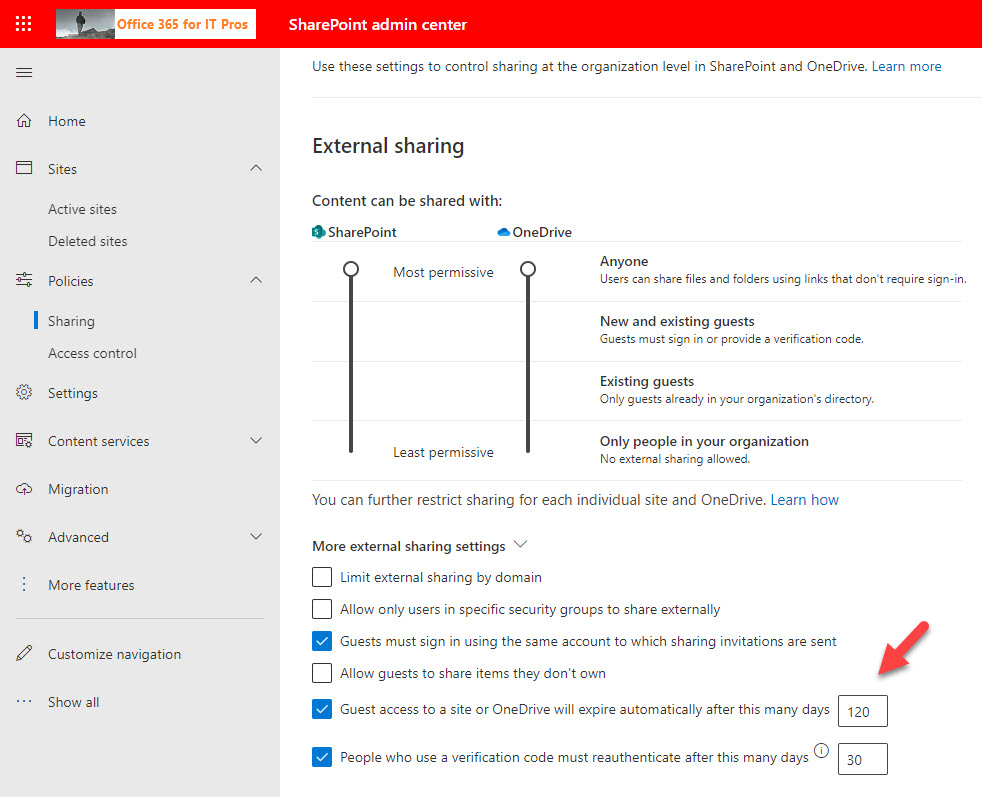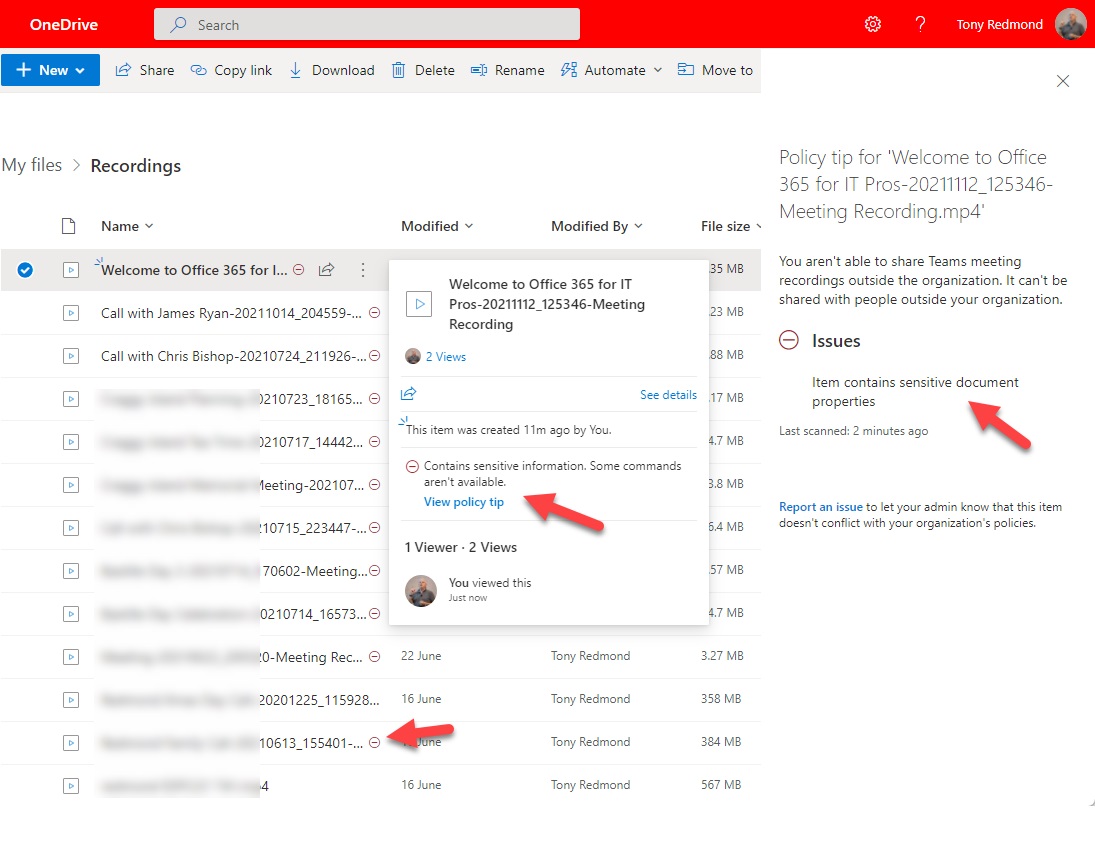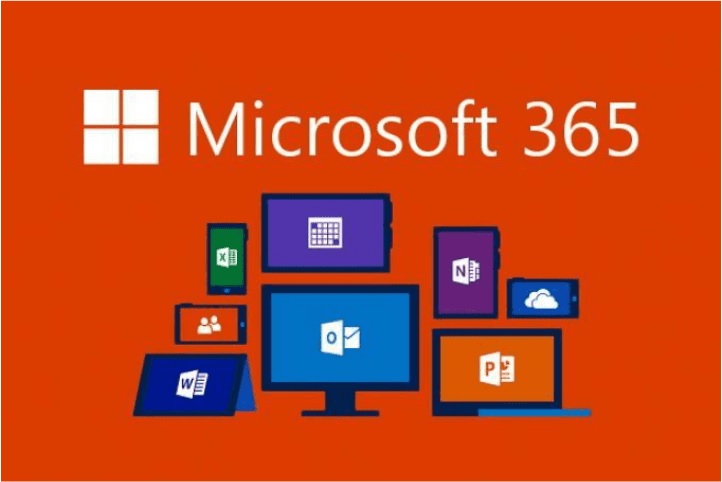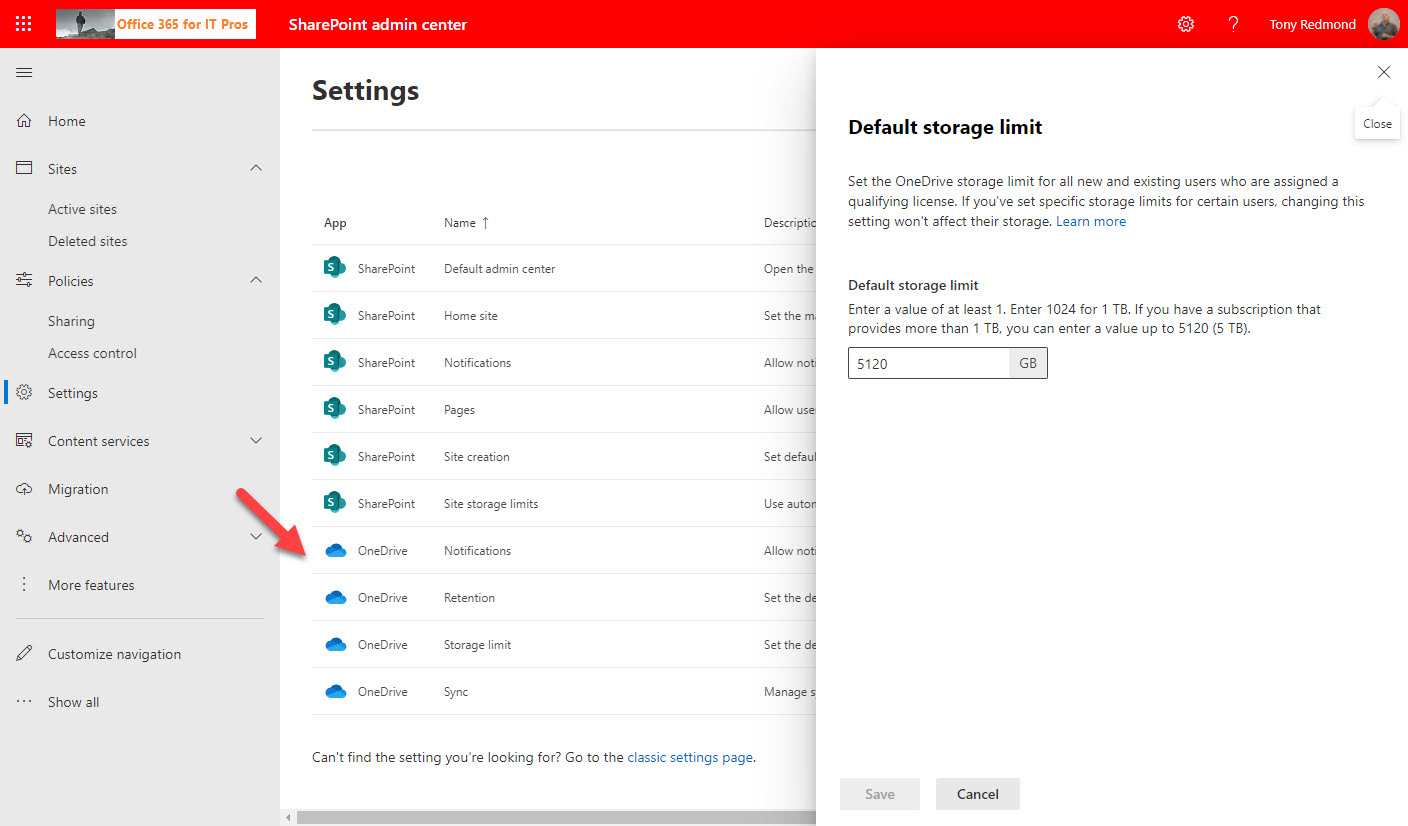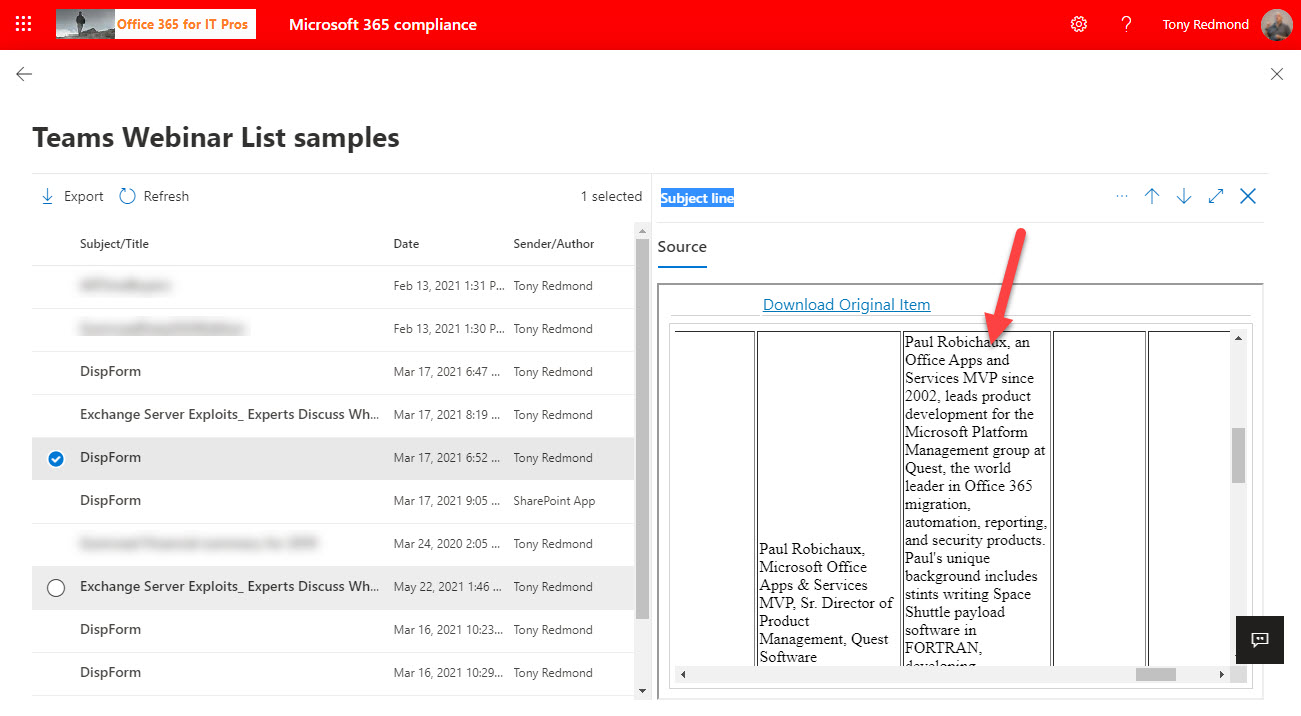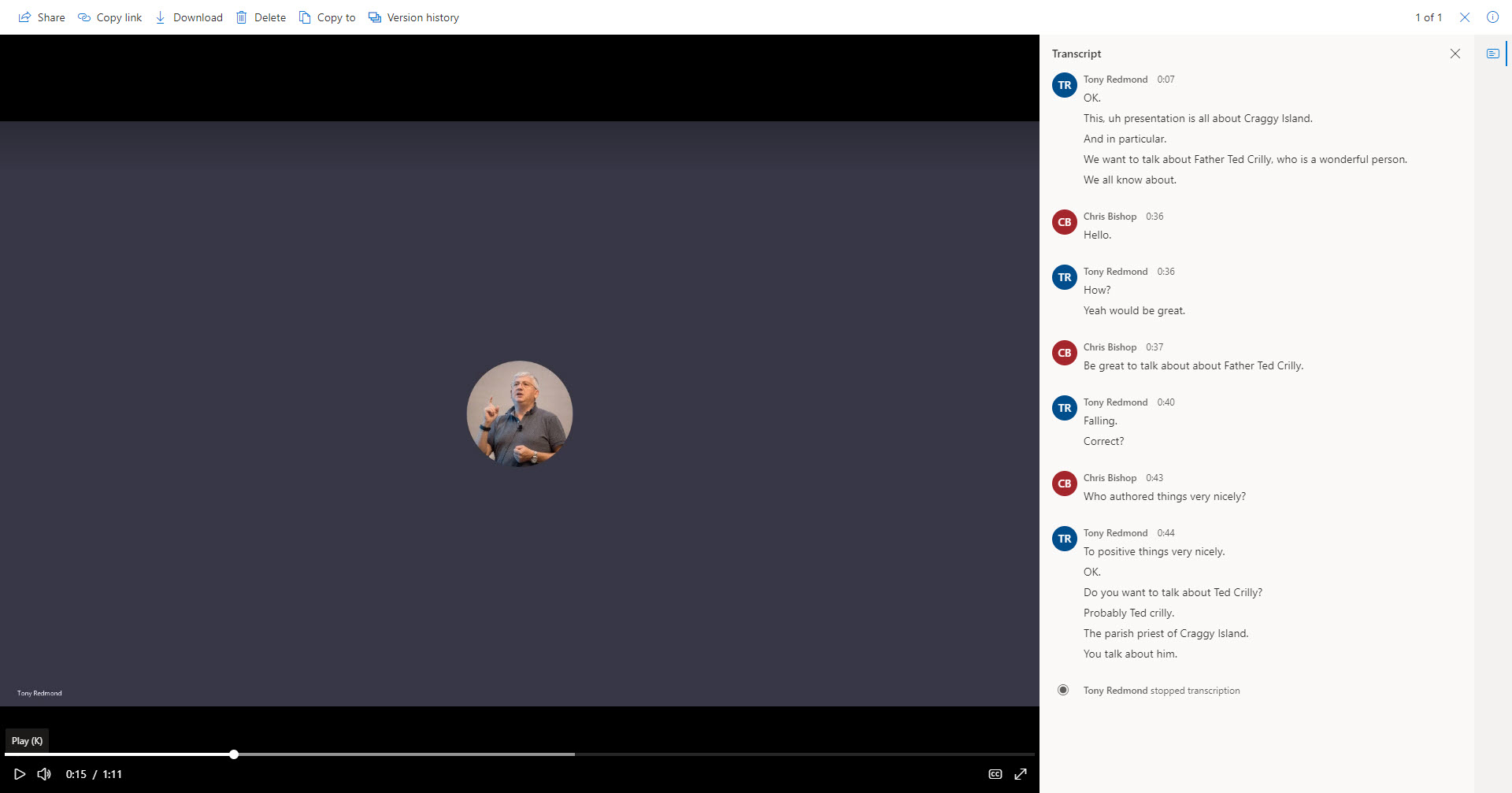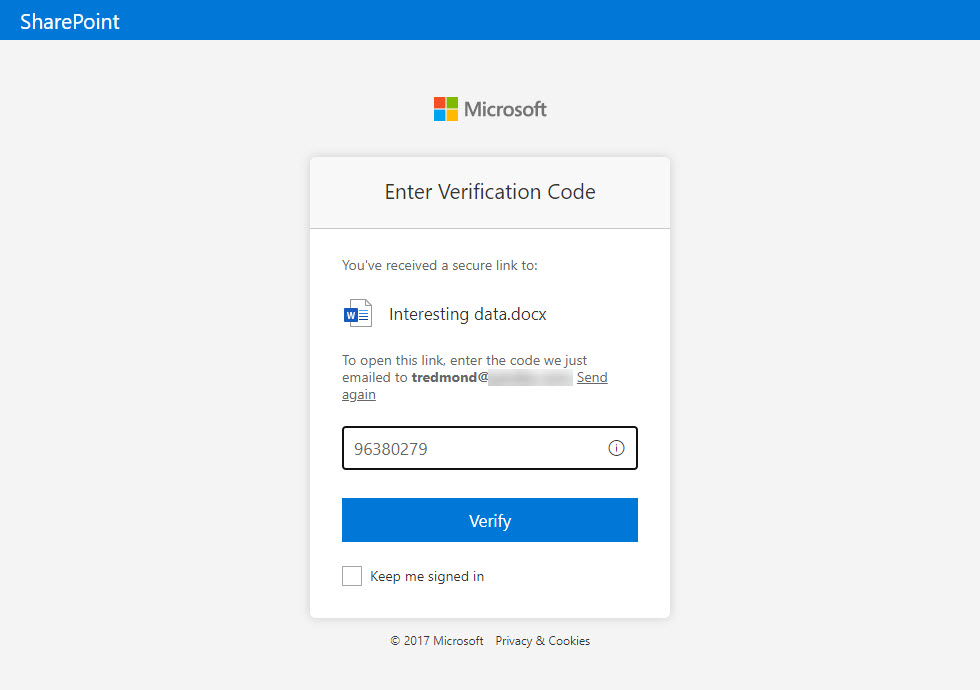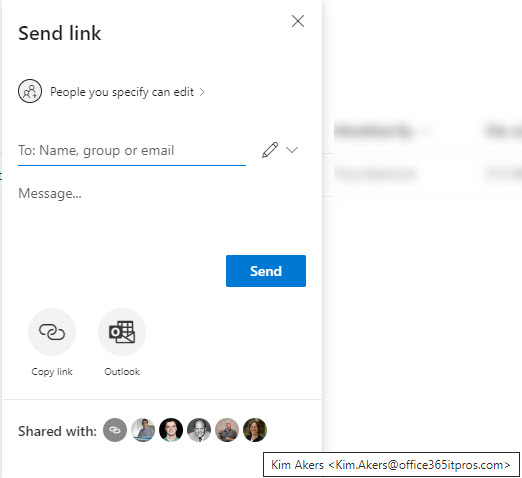Microsoft announced their plan to charge for unlicensed OneDrive for Business accounts in July. Now we have an unlicensed OneDrive accounts report in the SharePoint Online admin center. The report divides unlicensed OneDrive accounts into four categories and it’s up to Microsoft 365 tenant administrators to figure out whether to retain or remove unlicensed accounts before automatic archival comes into force in January 2025.
Microsoft plans to archive unlicensed OneDrive sites starting in January 2025. The obsolete sites will end up in Microsoft 365 archive, from where the sites can be reactivated for a small per-gigabyte fee. Archived sites are indexed and discoverable. However, the message is clear: remove unlicensed OneDrive sites now. They’re only cluttering up your digital landscape and might give Copilot for Microsoft 365 a headache.
On the surface, the work to delete OneDrive for Business accounts seems straightforward because Microsoft provides a 30-day deletion period to review contents and uses an automatic delegation process to assign control over the account to the deleted user’s manager. But given the number of applications that store data in OneDrive for Business, can anyone perform an end-to-end review of what’s in the account in a reasonable time?
In a change designed to reduce the consumption of storage quota, Stream video versions are no longer being generated for non-video updates such as changes to video metadata. Anything that alters the video content, like trimming some seconds from the start or end of a video, will create a new version. It seems like a perfectly reasonable change to make that might help SharePoint storage not be consumed quite so quickly.
A very useful update to support sharing links expiration for all link types used by SharePoint Online and OneDrive for Business is now rolling out and should be available in all Microsoft 365 tenants soon. Until now, expiration dates were only available for anyone links. Many organizations don’t allow anyone links, so enabling the feature for company-wide and specific people links will be much appreciated.
Understanding SharePoint Online storage used to be easy. Then applications like Loop arrived. Other influences like retention and archive can affect storage too. It’s a complicated situation before you throw OneDrive for Business into the mix and consider that Microsoft has removed unlimited OneDrive storage while an increasing number of apps store files in OneDrive. It’s a complicated situation.
If you wanted to write a PowerShell script to create a OneDrive storage report, you’d probably use the cmdlets from the SharePoint Online management module. But accessing OneDrive usage data via the Graph is much faster. And you can include information from other sources, such as user properties, to build out the report. All explained here.
The Sensitive by Default control allows tenants to prevent external access to newly uploaded documents until DLP processing checks their content. The idea is to close off the opportunity external users have to access control between its upload and DLP scanning of the content. You can combine the sensitive by default control with sensitivity labels to exert maximum control over confidential material.
For years, I have scanned the audit log to find FileDeleted events to report deletions of SharePoint and OneDrive documents. Now, FileRecycled audit events are used instead. This wouldn’t be a problem if Microsoft had told customers, but not a trace can be found to let organizations know that the audit data they use for compliance operations has changed. I don’t know if this is the only activity name change, but given that one update has happened (and for a relatively important audit event), it’s likely that others lurk in the undergrowth.
Microsoft 365 apps now boast a simplified sharing experience. In other words, Microsoft has overhauled and revamped the dialogs used to create and manage sharing links. This is the first real change in the area since 2020-21. It’s a good time to make sharing easier for people because the introduction of Microsoft 365 Copilot means that overshared files and folders will be exposed.
Microsoft 365 tenants have long been able to define file type exclusions for the OneDrive for Business sync client through the SharePoint Online admin center, PowerShell, or GPO. A change in the client now exposes the excluded file types to user view for the first time. Meantime, the OneDrive Personal client also gains support for file type exclusions.
Although SharePoint Online doesn’t support the allocation of OneDrive storage quotas via group membership, this is an easy solution to code with PowerShell. In this article, we discuss the steps needed to use groups to set a desired storage allocation for group members and how to apply those allocations to OneDrive for Business accounts. If you don’t want to use groups, Azure AD administrative units or even Exchange Online dynamic distribution lists would work too.
SharePoint Online now supports the Request Files feature to allow users to create links for external people to upload files to a folder in a document library. It’s a feature that will appeal to some organizations and horrify others who see the ability for external people to upload files to SharePoint Online as just another avenue for attack. The feature depends on the tenant allowing Anyone links, which are blocked by many organizations.
Applying a default sensitivity label to a SharePoint Online document library is just one of the set of security and management and governance features requiring the new Syntex Advanced Management license. The new license is in preview so all the features that it covers might not be fully baked. Microsoft 365 customers might well ask if this is yet another example of Microsoft bundling features into a new paid-for add-on license. Of course it is. You don’t expect new functionality for free, do you?
The Stream for SharePoint browser client includes the ability for people to record short (up to 15 minute) videos. The input comes from workstation cameras (including software cameras like Snap Camera) or the screen. Videos are stored in OneDrive for Business and can be updated and shared from there. The question we have is what role will Clipchamp play in the Microsoft 365 video playbook?
An update for SharePoint Online and OneDrive for Business means that the Office desktop apps (Windows and macOS) will apply default sensitivity labels to documents that aren’t already labeled. This is a good change because it helps to close a gap for organizations that want to be sure that every document is labeled.
The new Stream client contains some useful new features. However, the client is still in preview and is missing other features, like the ability to manage sets of videos through Microsoft 365 groups. Even so, there’s enough available now to demonstrate the wisdom of moving to the ODSP platform for video storage and management.
A new SharePoint Online setting allows tenants to switch the target for the Stream tile in the app launcher to the new Stream. The intention to is have users become accustomed to the features of the new GUI and the way that Stream can manage video content anywhere inside Microsoft 365. The downside is that migration from Classic Stream isn’t available yet. It’s coming, just like Christmas.
For whatever reason, Microsoft documentation says that items in the OneDrive for Business recycle bin are not indexed and cannot be discovered. They’re wrong. Searches can find items which end up the in OneDrive for Business recycle bin and any holds that applied to those items are respected. Maybe it’s just a matter of phrasing, but this proves once again that documentation can be incorrect. Just like blog posts!
If you run a search in Office.com, Microsoft Search now includes Teams and Outlook messages in its results. This is similar to the capability exposed when Bing.com connects Microsoft Search to include work items in its results. Loop components are also available in search results.
A new control in the SharePoint Online configuration is available to enable or disable Microsoft Loop components in Microsoft 365 apps, just in time for their introduction in OWA and Outlook for Windows. However, before we get all excited, there are some important issues with loop components when exported in eDiscovery search results that might make tenant administrators ponder. Just a tad…
The transition of Whiteboard storage from Azure to OneDrive for Business is approaching its end. A set of updated clients delivered at the end of March 2022 should do the trick. However, storing newly-created boards in OneDrive is one thing. Migrating old boards and updating components like the Whiteboard Admin PowerShell app are another. We don’t know what’s happening there and Microsoft hasn’t published any guidance.
Microsoft is rolling out a new feature to allow users to move OneDrive shortcuts to shared or private folders. Although a nice upgrade, being able to move shortcuts is not the biggest OneDrive issue. What stops me using shortcuts is the clash between them and the OneDrive sync client. It seems like it should be an easy fix for Microsoft to apply, and when they do, I’ll happily move OneDrive shortcuts around.
SharePoint Online and OneDrive for Business will soon gain the ability to apply default sensitivity labels to document libraries. The feature is currently in preview and requires some complicated PowerShell to configure, but Microsoft is working on the GUI and expects to make the capability generally available later this year.
Whiteboard is the latest Teams-enabled app to use OneDrive for Business for its storage. It’s unsurprising and it’s a trend likely to continue, and it creates an administrative challenge in terms of how to handle deleted Microsoft 365 user accounts. The suggested approach of having a designated user review the information and retrieve what’s important is OK for documents but doesn’t work for app-linked content. Retention policies are a better option.
A new tweak to the sharing link dialog used by OneDrive for Business, SharePoint Online, and other Microsoft 365 workloads block downloads of video and audio files by default. This is probably what you want to happen as, unlike Office documents, when you share a video or audio file, it’s likely to be final content ready to be consumed rather than being worked on.
A new sharing link dialog for OneDrive for Business and SharePoint Online is rolling out to Office 365 tenants. The new dialog makes it easier to configure settings for copy links. This might sound like a small thing on the overall scale of Microsoft 365, but making it absolutely clear how to configure sharing links is a good step towards helping users send the right kind of links when they share documents with others.
When SharePoint users share information, Office 365 captures events in its audit log. By analyzing the events, we can build a picture of how people share information. The sad thing is that the audit events logged when someone extends the validity of a sharing link doesn’t contain as much information as you might like. Even so, we can still analyze the sharing events to build a picture of what happens in an Office 365 tenant.
The SharePoint Online expiring access policy controls how long external users can use a sharing link. You don’t have to use this policy, but it’s a good idea to configure it. And once the policy is active, users will see notices when their sharing links approach expiration. The process to renew (extend) sharing links is quick and easy. And if you want even more protection, consider combining this policy with sensitivity labels.
Teams meeting recordings can contain a lot of confidential information. It’s a quick and easy task to create a Data Loss Prevention (DLP) policy to stop people sharing these files externally, In this post, we show just how simple the required policy is, and just how effective it is at stopping external sharing.
To help you recover from the blizzard of Microsoft 365 information released at Fall Ignite 2021, here are some notes about features and functionality you might have missed. Like any list created by a conference (virtual) attendee, it reflects my interests and what I was looking for. Feel free to disagree on the importance of any or all of the topics discussed here… and suggest some of your own in the comments.
Users attempting to delete SharePoint Online files assigned Microsoft 365 retention labels are blocked. That is, until a change arrives in November to make SharePoint Online and OneDrive for Business behave in the same manner. It’s a good change because it avoid the scenario where users remove retention labels to delete files, which undermines the organization’s compliance strategy. Now, deleted items go into the preservation hold library and stay there until their retention period expires. My only complaint is that the control over the mechanism is not as simple as it should be, but that’s a small and relatively unimportant flaw in the overall scheme of things.
Microsoft has simplified Microsoft 365 administration by moving controls from the OneDrive for Business admin center into the SharePoint Online admin center. It’s a good step because the two workloads are really two sides of the same file and document management function within Microsoft 365. With many apps moving storage of their data to OneDrive for Business, its role is becoming increasingly important. Even so, OneDrive doesn’t deserve a dedicated management portal.
Teams-based webinars are a popular way of hosting events like product briefings or announcements. Behind the scenes, the Microsoft 365 substrate stores information about webinar speakers, attendance, and event details as lists in the meeting organizer’s OneDrive for Business account. The information stored in OneDrive is indexed and available for eDiscovery. It’s a great example of the Microsoft 365 ecosystem in action.
Adding the ability to search for spoken text in Teams meeting recordings is just one of the new features added after Microsoft moved storage for meeting recordings to OneDrive for Business. A new video viewer and support for 27 additional languages (some different variants of a base language) are also important developments. In this article, we explore how Exchange Online captures the text spoken in Teams meetings, how OneDrive for Business links the text with the video, and how Search can find spoken text from the transcripts.
Microsoft plans to start removing the automatically-generated transcript of some Stream videos in September 2021. Only automatic transcripts are affected, and only if no one is looking at the video. If you’ve taken the time to edit a transcript or upload a manual transcript, Stream will leave these transcripts alone. It’s all part of the big plan to get Stream off its own Azure storage and onto SharePoint Online and OneDrive for Business.
Microsoft 365 notification MC277196 informs tenants about a new service plan to control the Nucleus synchronization engine. In effect, this means you can disable offline working with Microsoft Lists. The new service plan is due to turn up in Office 365 SKUs in September 2021. Lists will get a new icon to show their synchronization status. Apart from the delayed deployment of Nucleus, it’s all good news.
In October 2021, Microsoft will enable the Azure AD email one-time passcode identity provider in tenants. SharePoint Online and OneDrive for Business will use the provider to control access for external people to its resources. The net effect is that Azure AD will create guest accounts for external sharing recipients. Even though guest accounts need to be managed, there’s lots of good reasons to use guest accounts, as we describe here.
The OneDrive for Business sharing control (also used by SharePoint Online) now shows thumbnails of the set of people who already have access to an item. The idea is to give owners of information an at a glance view of who has access. It’s a nice change which adds something that probably no one thought was missing, The little things add all the difference!
Microsoft’s Whiteboard app is moving its storage off Azure to OneDrive for Business. The switchover will happen in October 2021, but tenants can opt-in to use OneDrive storage from the end of August. Some Whiteboard clients won’t be able to cope with OneDrive then, but Microsoft says that everything will be straightened out for the switchover in October. As we explain here, it’s a good idea (for many reasons) to move Whiteboard storage to OneDrive.
